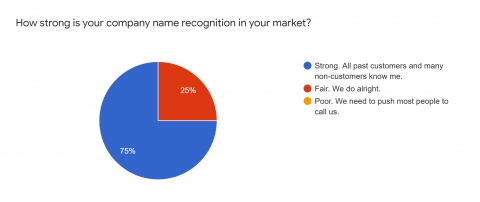Managing Rising Costs
15 August, 2022
15 August, 2022
by Diane Walsh, VP of Market Development & Channel Management for Shurtape Technologies, LLC
As professional painting contractors continue to wrestle with rising material costs, wage increases and labor shortages, many are finding new ways to navigate these challenges while also keeping their customers happy. What are these businesses doing to protect their bottom lines and keep their schedules full? Here’s a roundup of tips for controlling costs, training crew members and better communicating with customers.
Managing Material Costs
For professional painters, the one material that is most important is the one that has shown the sharpest price increase–paint. “Our paint costs have gone up by about 8% in the past year and more increases are likely coming this fall,” said Mike Green, sales manager for Fitzpatrick Painting, a large residential and commercial painting contractor located in Albany, Oregon. Green noted that prices for other supplies are also on the rise.
To soften the impact of these increases, one way to save money is by ordering soft supplies in bulk and keeping more in stock in the shop. Lower prices are often available when you purchase supplies in larger quantities. Also, buying in bulk and stocking up offers some additional savings and price protection for products with costs that are expected to continue to rise.
Having good relationships with your suppliers can also go a long way in saving you money. First, your supplier can alert you to upcoming price increases, which will give you time to prepare and to alert your customers if the increase in price is going to be passed on to them. Second, you may be able to negotiate with your supplier to get a lower price, especially if you have been a long-time customer.
Lastly, when ordering paint for a job, try not to order more paint than you will need to avoid waste. “Typically, we order three-quarters of the paint we know we’ll need upfront and then assess the job to ensure we don’t have wasted paint we can’t return,” said Green about Fitzpatrick Painting’s rule of thumb.
Conserving Materials to Save Money
In addition to controlling costs on the front end, you can also control material expenses after you’ve made your purchase by allowing crew leads to train apprentice painters on ways to conserve materials. Green offers two tips as examples of ways that Fitzpatrick Painting does this.
First, since the hot weather months are known for damaging materials that are not stored correctly, crew members are instructed not to store tape in direct sunlight that can cause it to become unusable. So, teaching proper material storage on the job is one way to eliminate waste.
Another way to conserve materials is to use the right materials and the right sizes for the job so you don’t end up using twice the amount. For example, if 1 ½-inch tape is required for prepping, don’t use 1-inch tape, as this will result in waste because you will use twice as much. You will also likely take twice as long, which translates to additional expense.
Providing Apprentices With Proper Training
Labor is in short supply and wages have increased by five to seven dollars per hour or more in many areas across the country. Add to that the peak painting seasons when overtime and time-and-a-half are necessary to get more jobs done when the weather is good, and you can quickly see how the cost of labor has taken a big bite out of the bottom line. This means you need the team that you have to work efficiently and professionally, and training is essential. And since today’s apprentices are likely tomorrow’s crew leaders, teaching your new hires your best practices and what you mean by professionalism is an important investment in keeping your customers happy, building a solid reputation and keeping your schedule full.
“Our crew leads have a weekly allotment of time for training apprentices, and we are constantly working to support a training culture,” said Green about Fitzpatrick’s approach to training. The company also offers a library of training and instructional videos comprising short takes from crew leads on a wide variety of topics, including those that save the company money, such as how to properly store materials and conserve supplies. Both approaches to training are a great way to capture the knowledge of more seasoned painters and share it with those just starting out in the trade, and they can help create a culture that is focused on controlling waste.
Communicating With Customers
The converging boom in demand and bust in labor availability have placed many painting contractors in the difficult position of having to charge their customers more for supplies and labor while also making them wait longer to get on the schedule to get their projects completed. While most customers are likely to expect longer lead times and higher prices, these conditions still require a bit of courtesy and finesse when it comes to explaining costs and schedules to clients.
First, Green advises to get out ahead of the message and prepare your customers for price increases and lengthening schedules before you expect them to take effect. This will give your customers time to consider how the changes will impact them and will allow them time to plan. Also, consider explaining the reasons for the increases and longer scheduling times so they don’t misinterpret them as arbitrary or the result of poor business management.
Next, use your available communication channels like social media, text, and email to communicate price increases and schedule changes, but don’t forget the value of the personal touch. Calling your customers or meeting with them in person builds a relationship of trust and offers you an opportunity to better understand your customers and respond to their needs.
Painting the Picture
The cost of doing business is always going to be a balancing act, especially when it comes to helping your customers understand how your business must adapt to factors that are out of your control. Working more closely with your suppliers, training your crew members on proper use and conservation of materials, and proactively communicating with your customers are all proven approaches available to virtually every painting professional that can help ensure the continued health of your business.
About the Author
Diane Walsh is Vice President, Market Development for Shurtape Technologies, LLC, maker of FrogTape® brand Painter’s Tape. She directed the Shurtape Professional Paint Advisory Board, working with leading contractors across the country to explore industry trends and share insights for the benefit of the entire trade. She also served on the PCA Residential Forum Board of Directors for seven years and was named the PCA Associate Member of the Year in 2018.




Add new comment